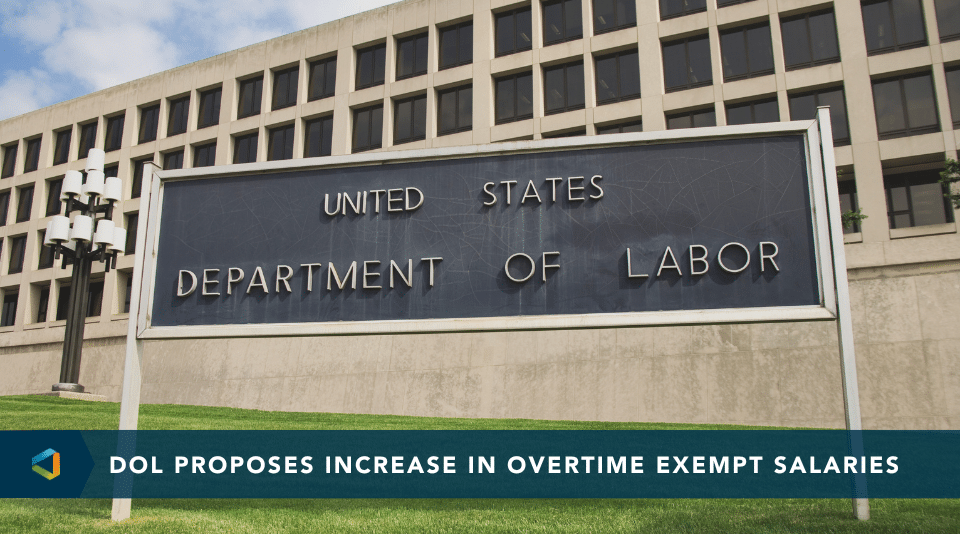A potential new alternative for groups of employers?
On January 5, 2018, the Department of Labor (DOL) issued its proposed rule expanding the circumstances under which employer groups may band together to purchase health insurance for their employees. The proposed rules, redefining the criteria to create association health plans (AHPs), anticipates more affordable health plan choices for individuals and employers.
Background
Shortly after taking office, President Trump issued an Executive Order requesting the Departments to review their administrative practices and procedures and look for opportunities to reduce the burden on individuals, employers, insurers and the healthcare industry. In the October 12, 2017 Executive Order, the President confirms the desire to develop a healthcare system that “provides high-quality care at affordable prices for the American people."
Choosing AHPs as one of three distinct areas for improvement, the administration hopes the modification of existing rules will allow more employers to form AHPs, facilitate purchase across State lines, and improve choice and affordability.
Current federal law and regulations do not consider association health plans (groups of individual employers) to be a single employer. They prohibit employers from grouping together solely for the purpose of health insurance by requiring that the association is in existence for five years prior to offering a health plan. When considering which market rules apply, e.g. individual, small group, or large group, to an employer, the Departments look through any association or group of employers to the actual individual or employer themselves and use their individual size to determine which laws and regulations apply.
For example, three separate members of the same association will only have access to the plans in the market that correspond with their size. A host of other laws and regulations also apply in this manner, like Consolidated Omnibus Budget Reconciliation Act (COBRA) or state continuation.
| Employer Type/Size | Applicable Health Plan Market | Compliance with State Mandates | Must Include ACA Essentials Health Benefits |
| Sole Proprietor with No Employees | Individual | X | X |
| Employer with 10 Employees | Small Group | X | X |
| Employer with 75 Employees | Large Group |
Overview of the Proposed Rule
To allow more employer groups to unify and enjoy the benefits of being a large group, the association must be recognized as a single “employer”. To be a single “employer,” associations must meet specific criteria. The new rule outlines commonality, structure and control of the association, health nondiscrimination protections, and includes working owners as the means to achieve this new single employer AHP.
Commonality of Interest
Employers may band together solely for the purpose of offering health coverage if they are either:
- In the same trade, industry, line of business, or profession; or
- Have a principal place of business within a region that does not exceed the boundaries of the same State or the same metropolitan area (even if the metropolitan area includes more than one State) - examples include the Washington Metropolitan Area of the District of Columbia and portions of Maryland and Virginia, the Greater New York Area/Tri-State Region covering portions of New York, New Jersey, and Connecticut, specific cities or counties.
Bona Fide Group or Associations of Employers
A bona fide group or association of employers capable of establishing a group health plan must meet the following requirements:
- The group or association exists for the purpose, in whole or in part, of sponsoring a group health plan that it offers to its employer members;
- Each employer member of the group or association participating in the group health plan is a person acting directly as an employer of at least one employee who is a participant covered under the plan;
- The group or association has a formal organizational structure with a governing body and has by-laws or other similar indications of formality;
- The functions and activities of the group or association, including the establishment and maintenance of the group health plan, are controlled by its employer members, either directly or indirectly through the regular nomination and election of directors, officers, or other similar representatives that control the group or association and the establishment and maintenance of the plan;
- The employer members have a commonality of interest as described in paragraph (c) of this section;
- The group or association does not make health coverage through the association available other than to employees and former employees of employer members and family members or other beneficiaries of those employees and former employees;
- The group or association and health coverage offered by the group or association complies with the nondiscrimination provisions (see below); and
- The group or association is not a health insurance issuer or owned or controlled by such a health insurance issuer.
Health Plan Nondiscrimination
Each bona fide group or association, and any offer of health coverage must comply with the following nondiscrimination provisions:
- The group or association must not condition employer membership in the group or association based on any health factor of an employee or employees or a former employee or former employees of the employer member (or any employee's family members or other beneficiaries)
- The group health plan sponsored by the group or association must not discriminate based on health status, medical condition, claims experience, receipt of health care, medical history, genetic information, evidence of insurability, or disability
- The group health plan sponsored by the group or association must comply with respect to nondiscrimination in premiums or contributions required by any participant or beneficiary for coverage under the plan
- In applying the nondiscrimination provisions of paragraphs (2) and (3) of this section, the group or association may not treat different employer members of the group or association as distinct groups of similarly-situated individuals.
Dual Treatment of Working Owners
A working owner may qualify as both an employer and as an employee of a trade or business. A “working owner” is an individual who:
- Has an ownership right of any nature in a trade or business, whether incorporated or unincorporated, including partners and other self-employed individuals;
- Is earning wages or self-employment income from the trade or business for providing personal services to the trade or business;
- Is not eligible to participate in any subsidized group health plan maintained by any other employer of the individual or of the spouse of the individual; and
- Either:
- (Works at least 30 hours per week or at least 120 hours per month providing personal services to the trade or business, or
- Has earned income from such trade or business that at least equals the working owner's cost of coverage for participation by the working owner and any covered beneficiaries in the group health plan sponsored by the group or association in which the individual is participating.
- Absent knowledge to the contrary, the group or association sponsoring the group health plan may reasonably rely on written representations from the individual seeking to participate as a working owner as a basis for deciding whether the individual meets the criteria above.
Anticipated Outcomes
The Departments feel that the expansion of the single employer definition and the clarifying guidelines will help:
- create more affordable alternatives for individuals and small employers;
- deliver plan options that do not have to comply with ACA or State coverage mandates thereby lowering the cost and eliminating the requirement to purchase coverage the individual may not need;
- bring affordable alternatives to previously uninsured business owners; and
- provide individuals qualifying as working owners to participate in a group health care option as an alternative to the individual market
Next Steps
The Employee Benefits Security Administration (EBSA) and the Department of Labor are taking comments on the rule and responses to the long list of questions they pose within the rule. The commentary period ends on March 6, 2018.
OneDigital is working on a response to the Departments and welcomes your input. Please contact your OneDigital representative to provide your remarks.




